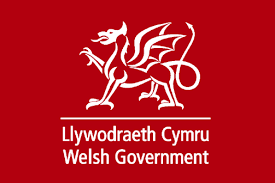BSG Report – Local Benefits for Full Fibre and 5G
The Broadband Stakeholder Group publishes research by Oxera to help local authorities understand the localised economic benefits of full-fibre and 5G
Key localised economic benefits of full-fibre and 5G include:
- Local authorities can see up to 3.2 per cent increase in new businesses operating in the area. If reflected in business rates, a local authority could see an increase in gross revenue of over £10,000[1]
- Existing businesses will see an increase in productivity which should result in an expected increase in turnover of up to 3.8 per cent per worker per annum
- Local authorities can realise direct benefits by being able to implement more innovative public service delivery whilst driving down costs, such as through increased cloud adoption.
The Broadband Stakeholder Group (BSG) has published new research to help local authorities understand the economic benefits that are available to them through the deployment of very high capacity networks such as full-fibre and 5G.
Local government is pivotal to the ability of telecoms operators to deploy the networks and infrastructure essential to the UK for both current and future connectivity needs. The telecoms sector is used to engaging with local authorities countrywide and as such understand their competing pressures and obligations. Local authorities’ cooperation in deploying our future communications networks is critical. This report seeks to complement the BSG’s previous research[2] into how to best engage with operators by setting out the positive benefits that the next generation of communication technologies will deliver.
Using the ONS categorisation of geographical areas across the UK,[3] local authorities can use this framework to understand the practical benefits that full-fibre and 5G can deliver in their specific area depending on their locality. The report, which draws on a comprehensive review of existing empirical studies and reports on the impact of full-fibre and 5G connectivity, examines the positive benefits that these very high capacity networks will deliver in the form of;
- Benefits to existing businesses; the evidence shows that they could see a productivity increase of up to 3.8 per cent in turnover per worker per annum in some cases
- New businesses; an estimated 3.2 per cent increase in the number of businesses operating in areas which have poor levels of coverage today
- Increases in employment; a mix of safeguarded jobs or new employment of up to 1.7 per cent in some areas.
- Private benefit to consumers; expected increase in consumer surplus for digital communications as they benefit from new services.
- Benefits to local authorities; increased economic activity as well as direct benefits in improved public service delivery.
- Wider society impact; harder to quantify but important improvements in areas such as inclusion.
These improvements will change depending on the make-up of the local area, driven by factors such as population density, sectoral composition, population density, baseline telecoms coverage, and take-up rates.
Matthew Evans, CEO of the BSG, said “Industry is committed to delivering the Government’s aims of nationwide full-fibre by 2033 and 5G to the majority of the population by 2027.[4] These are ambitious timescales under the current policy and regulatory landscape and are intended to be delivered with minimal public funds. It is a strategic civil and digital infrastructure deployment. This upgrade of our national digital infrastructure will not happen without close engagement between Government and the private sector. We need sufficient capital, sufficient skills and the cooperation with every local authority in the country.
“Many reports already estimate the benefits that full-fibre and 5G can bring to the UK economy making the overall business case while ensuring that central government plays its role in facilitating this investment. But what does it mean for Manchester, Merthyr Tydfil or the Midlothian hills? Without knowing the answer to this question, it is understandable that there is a disparity amongst authorities in how they engage with and approach builders of digital infrastructure. This report seeks to address that gap.”
Felipe Florez Duncan, Partner and Head of TMT, and Matt Shepherd, Principal and Infrastructure Planning lead at Oxera, said: “The roll-out of very high capacity networks such as 5G and full fibre broadband networks will have important impacts on consumers, businesses and local authorities.
However, the deployment of these networks will require discussions and action at local levels. This study sets out how those local impacts can be thought about and assessed. This will enable those interested in this subject to think about what these impacts will be in their local area and, importantly, to develop strategies to realise those benefits.”
This report establishes the framework against which we can measure the success of full-fibre and 5G deployments. Naturally, we will look to revisit the evidence base which fits into this framework as the roll-out continues. Whilst we have used international literature in the case of full-fibre, as a new technology, the evidence base for 5G is loosely based on the capacity and speed elements of the technology. As the evidence base for the applications of 5G involving low latency or as a driver of internet- of-things-based solutions expand, we would expect to see a further increase in benefits that it can bring to local areas.
You can find a copy of the summary report here.
You can find a copy of the main report here.
——————————————————–
[1] The Prime Minister’s constituency falls within the Borough of Hillingdon. Its business rate revenue is forecast to be £387,894 in 2018/19.
[2] https://www.connectivityuk.org/publications/publications/
[3] These areas are based on ONS statistics ranging from mainly rural to urban with major conurbation.
[4] https://www.gov.uk/government/publications/future-telecoms-infrastructure-review






